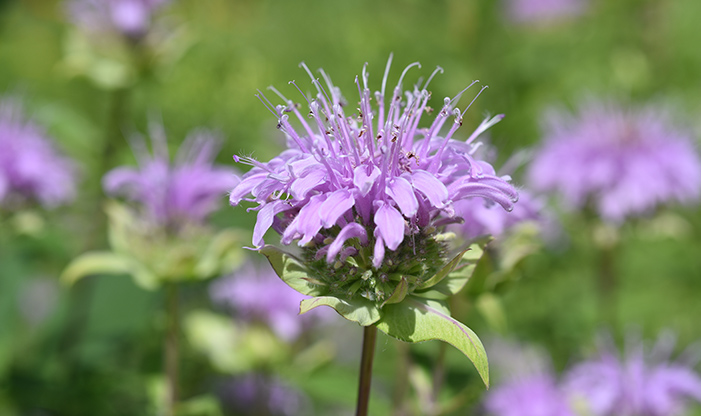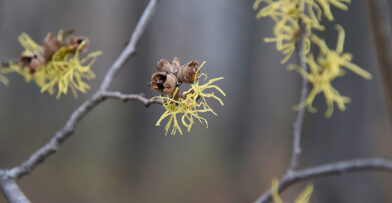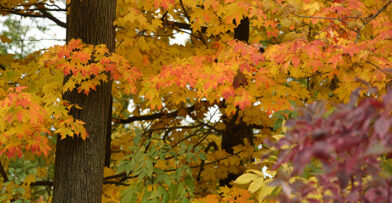Schlitz Audubon is fortunate to have high-quality prairie both near the Visitor Center and on some of the furthest hikes you can take. You’ll encounter short and tall grasses, with flowers rising above them and some hiding near the ground. The flowers, seeds, and grasses of these prairie wildflowers provide ample food for birds, insects, pollinators, and more.
One of the first prairie plants you may notice near the main building is wild bergamot, which has a crown of lavender-pink, spindly, tube-shaped flowers. These deep, nectar-filled flowers attract pollinators such as the rusty patched bumblebee, an endangered species whose whereabouts are currently being monitored by the Center’s conservation department.
Flowers of the Wet Prairie
Along our Gateway Trail, just west of the parking lot, visitors have the opportunity to gaze at flowers in our wet prairie, one of Wisconsin’s rarest habitats. Once abundant, this habitat type has been reduced to less than one percent of its original footprint across the state.
If you follow the new accessible boardwalk through the prairie west of the building, one of the highlight flowers planted around our new ponds is butterfly weed, a milkweed and favorite food source of the monarch butterfly. The bold orange, fluted flowers match the wings of the long-distance migrator. You’ll also find bottle gentian, with clusters of violet-colored, bottle-shaped flowers, sitting on top of whorled leaves. Bumblebees are their main pollinators as they are one of the few insects able to pry open bottle gentian’s closed petals.
Further on the property in our Western Meadows, you’ll find another favorite of bumblebees and butterflies alike, prairie blazing star. Tufts of bright pink-purple, star-shaped flowers ascend a stem that can reach up to five-feet tall. But one of the tallest flowers in our prairies is the golden, sunflower-like compass plant. Each plant can have a dozen or more flowers at the top of its forked stem. The term “compass” comes from the pioneer belief that its leaves would always face in the north-south directions, but this isn’t always true.
Wildflowers and Their Hidden Roots
The leaves and flowers of prairie plants have some interesting and unique characteristics, but their hidden roots are the truly fascinating part of the plant. Each year the stem, leaves, and flowers grow and then die back, but the root continues to grow, only going dormant in the winter months. Generally, the roots of a prairie plant go twice as deep as the height of the plant, so a 10-foot tall compass plant can have roots that dig as much as 20 feet down into the soil. During long, dry summers, these deep roots can actually reach groundwater.
Prairie wildflowers are well suited for the summer sun, and wildlife are well adapted to using these plants for food and shelter. Visit the Center and take a hike through the prairie habitat to see our wildflowers!


